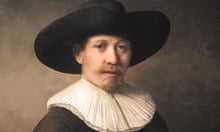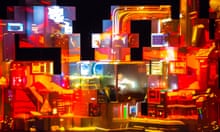If people think the portrait of a 17th-century thirtysomething man in black hat and white collar looks unmistakably like a Rembrandt, then Bas Korsten will be a happy man. The painting’s true creators are, however, data analysts and computers.
On Tuesday in Amsterdam, an artwork called “the Next Rembrandt” will be unveiled for the first time.
It is the result of an 18-month project which asks whether new technology and data can bring back to life one of the greatest, most innovative painters of all time.
Advertising executive Korsten, whose brainchild the project was, admitted that there were many doubters. “The idea was greeted with a lot of disbelief and scepticism,” he said. “Also coming up with the idea is one thing, bringing it to life is another.”
The project has involved data scientists, developers, engineers and art historians from organisations including Microsoft, Delft University of Technology, the Mauritshuis in The Hague and the Rembrandt House Museum in Amsterdam.
The final 3D printed painting consists of more than 148 million pixels and is based on 168,263 Rembrandt painting fragments.
Some of the challenges have been in designing a software system that could understand Rembrandt based on his use of geometry, composition and painting materials. A facial recognition algorithm was then used to identify and classify the most typical geometric patterns used to paint human features.
Korsten stressed the project was not trying to create a new Rembrandt. “We are creating something new from his work. Only Rembrandt could create a Rembrandt.”
There have been – and will be – critics of the project, said Korsten, people who object to having their idol messed with.
But many more “have embraced this as a way of getting to know more about Rembrandt and what made Rembrandt Rembrandt,” he said. “It is a way of keeping the great master alive.”
Many art historians, including the directors of the Mauritshuis and Rembrandt’s house were on board and provided significant help.
The art historian Gary Schwartz called it “a fascinating exercise in connoisseurship”. He added: “The developers deserve credit for setting themselves to identify the features that make a Rembrandt a Rembrandt.
“While no one will claim that Rembrandt can be reduced to an algorithm, this technique offers an opportunity to test your own ideas about his paintings in concrete, visual form.”
Prof Joris Dik, who led the Delft University of Technology team, said: “There’s a lot of Rembrandt data available – you have this enormous amount of technical data from all these paintings from various collections. And can we actually create something out of it that looks like Rembrandt? That’s an appealing question.”
The idea was developed by the advertising agency J Walter Thompson in Amsterdam for its client, ING Bank. “They wanted us to match its innovation in the banking world in the domain of art and culture,” said Korsten, the agency’s executive creative director.
He hopes the project will be the start of a conversation about art and algorithms. “If you look at how music has embraced the computer, why doesn’t that happen in visual arts?
“It has taken some perseverance. There have been many moments when we’ve thought we’re not going to make it … it’s too overwhelming, there’s too much information, too much data. But I think we have something decent to show people.”




Comments (…)
Sign in or create your Guardian account to join the discussion